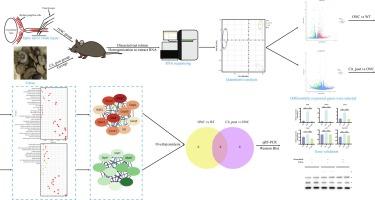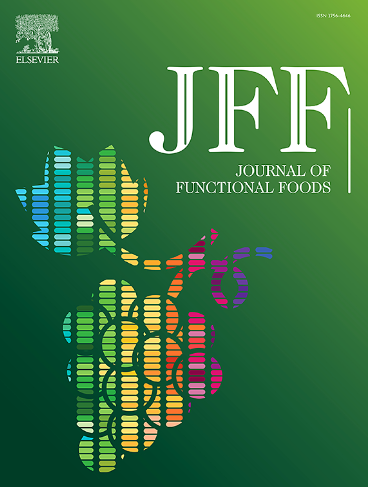Citrus extraction provides neuroprotective effect in optic nerve crush injury mice through P53 signaling pathway
IF 3.8
2区 农林科学
Q2 FOOD SCIENCE & TECHNOLOGY
引用次数: 0
Abstract
Optic nerve injury induces the loss of retinal ganglion cells and optic nerve atrophy. Our previous study demonstrated the neuroprotective effects of Citrus in the optic nerve crush (ONC) injury model. To explore the underlying neuroprotective mechanism, we focus on the changes in gene expression profile pre- and post-Citrus treatment in the ONC injury model. The results suggested that the Citrus regulated the chemokine signaling pathway and P53 signaling pathway, etc. Four genes were identified as potential target genes (Melk, Mki67, Ccnb1, and Cenpf). Subsequent qRT-PCR and western blot confirmed that Citrus regulated cell apoptosis and inflammation-related gene expression, and inhibited P53 activation-induced cell death. The present study demonstrated that the neuroprotective effect of Citrus was achieved through the regulation of the P53/BCL-2/BAX pathway and the expression regulation of four critical genes, which provide novel therapeutic targets for the therapy of optic nerve injury.

柑橘提取物通过 P53 信号通路为视神经挤压伤小鼠提供神经保护作用
视神经损伤会导致视网膜神经节细胞丧失和视神经萎缩。我们之前的研究表明,柑橘在视神经挤压(ONC)损伤模型中具有神经保护作用。为了探索其潜在的神经保护机制,我们重点研究了柑橘治疗视神经损伤模型前后基因表达谱的变化。结果表明,柑橘调节趋化因子信号通路和 P53 信号通路等。四个基因被确定为潜在的靶基因(Melk、Mki67、Ccnb1 和 Cenpf)。随后的 qRT-PCR 和 Western 印迹证实,柑橘能调节细胞凋亡和炎症相关基因的表达,并抑制 P53 激活诱导的细胞死亡。本研究表明,柑橘的神经保护作用是通过调节 P53/BCL-2/BAX 通路和四个关键基因的表达实现的,这为治疗视神经损伤提供了新的治疗靶点。
本文章由计算机程序翻译,如有差异,请以英文原文为准。
求助全文
约1分钟内获得全文
求助全文
来源期刊

Journal of Functional Foods
FOOD SCIENCE & TECHNOLOGY-
CiteScore
9.60
自引率
1.80%
发文量
428
审稿时长
76 days
期刊介绍:
Journal of Functional Foods continues with the same aims and scope, editorial team, submission system and rigorous peer review. We give authors the possibility to publish their top-quality papers in a well-established leading journal in the food and nutrition fields. The Journal will keep its rigorous criteria to screen high impact research addressing relevant scientific topics and performed by sound methodologies.
The Journal of Functional Foods aims to bring together the results of fundamental and applied research into healthy foods and biologically active food ingredients.
The Journal is centered in the specific area at the boundaries among food technology, nutrition and health welcoming papers having a good interdisciplinary approach. The Journal will cover the fields of plant bioactives; dietary fibre, probiotics; functional lipids; bioactive peptides; vitamins, minerals and botanicals and other dietary supplements. Nutritional and technological aspects related to the development of functional foods and beverages are of core interest to the journal. Experimental works dealing with food digestion, bioavailability of food bioactives and on the mechanisms by which foods and their components are able to modulate physiological parameters connected with disease prevention are of particular interest as well as those dealing with personalized nutrition and nutritional needs in pathological subjects.
 求助内容:
求助内容: 应助结果提醒方式:
应助结果提醒方式:


